Each wedding dance incorporated within your celebration has the potential to be one of the most magical moments of the day. Among the many decisions you’ll make for your big day, deciding when to have each dance is often one of the most debated. Couples often go back and forth, weighing what works best for the evening’s flow. Today I shed some light on the most popular types of wedding dances, and where they might fit within your wedding day.
Weddings are packed with special moments, and the wedding dances are often the most anticipated by guests and the couple alike. Properly timing each dance ensures the celebration flows smoothly. From the first dance to the last, here’s a guide to plan each moment for maximum impact and enjoyment.
Tip: There’s no right or wrong answer when it comes to your wedding dances. This is your day, and you can choose what works best for your aesthetic, your guests, and even your nerves!
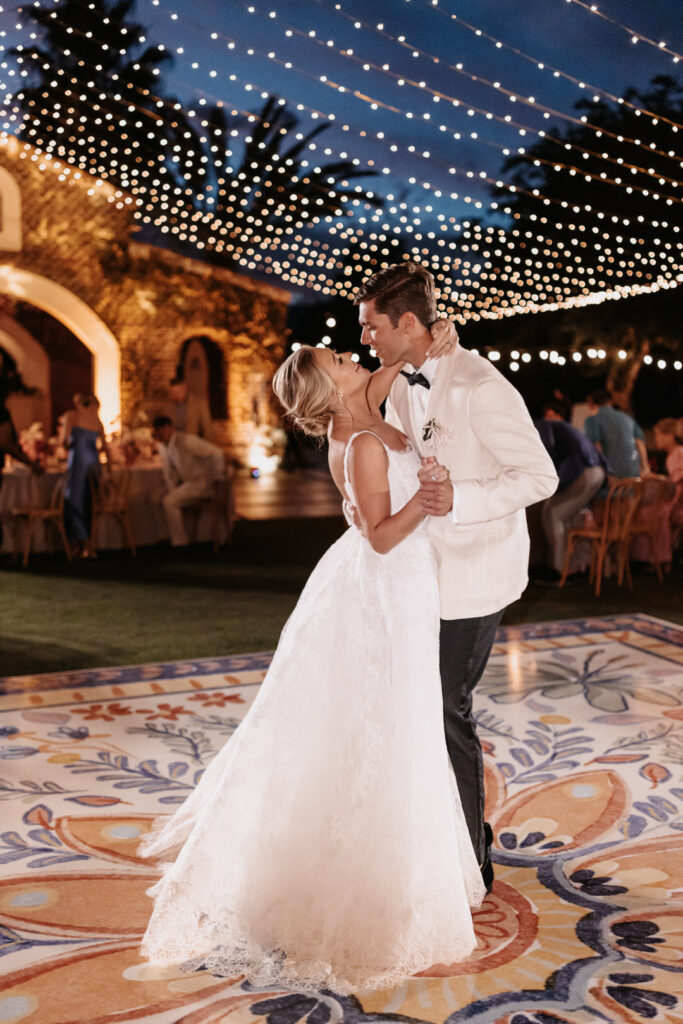
The First Dance
The first dance is one of the most romantic moments of the wedding. Traditionally, the couple takes their first steps on the dance floor right after their grand entrance to the reception. This provides a smooth transition from cocktails to celebration, and it lets everyone turn their attention to the newlyweds.
Many couples opt for this timing, especially if they’ve choreographed their dance and feel a little nervous. Doing the first dance early allows them to relax and enjoy dinner without the anticipation of dancing in front of everyone.
Alternatively, some couples choose to wait until after dinner, using the first dance as a kickoff to the evening’s entertainment. Either way, ensure the dance happens early enough to capture your guests’ attention without making them wait too long to get the party started.
Parent Wedding Dance
The parent wedding dances usually follow right after the newlyweds’ first dance. These sentimental moments are between the bride and her father, and the groom and his mother (or any variation that suits your family). The father-daughter and mother-son wedding dances offer a sweet nod to the parents, never failing to add an emotional touch to the night.
Having these dances immediately after the first dance maintains the flow of formalities before the party truly begins. Some couples blend both parent dances into one song to save time, which can work well. Alternatively, doing these dances after dinner, before opening up the dance floor, can also be a smooth way to transition into the post-meal party.
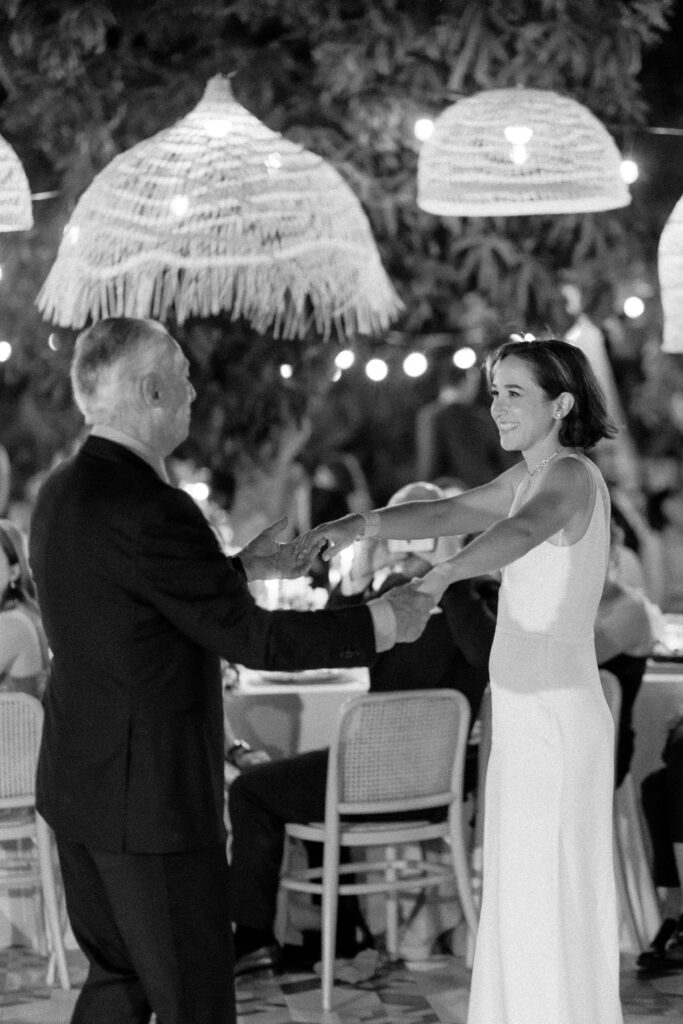
Bridal Party Dance
If you’re including your bridal party in a special dance, that typically happens after the parent’s wedding dance. This fun moment brings in your closest friends, and/or the bridesmaids and groomsmen.
This moment of togetherness can truly energize the watching crowd. It often leads to inviting all guests to join the dance floor, encouraging a lively atmosphere throughout the night. The key is to build the energy in a way that keeps everyone engaged.
Group or Cultural Dance
Many couples, especially in multicultural weddings, include traditional or group dances to honor their heritage. Whether it’s a Greek Kalamatianos, Mexican La Vibora de la Mar, or Jewish Hora, these dances are great for getting everyone involved.
Typically, these happen after the formal dances, but their time can be flexible. Group dances are fantastic icebreakers, so aim to plan them earlier in the evening if possible, ensuring the momentum on the dance floor keeps building.
Cake-Cutting Dance Break
Pausing the dancing for a cake-cutting ceremony can be a fun way to reset the energy. It often takes place after dinner, just before the dance floor officially opens, or after the first dance set. To avoid losing guests’ attention, keep the cake-cutting short and sweet, and follow it up with a lively, high-energy song.
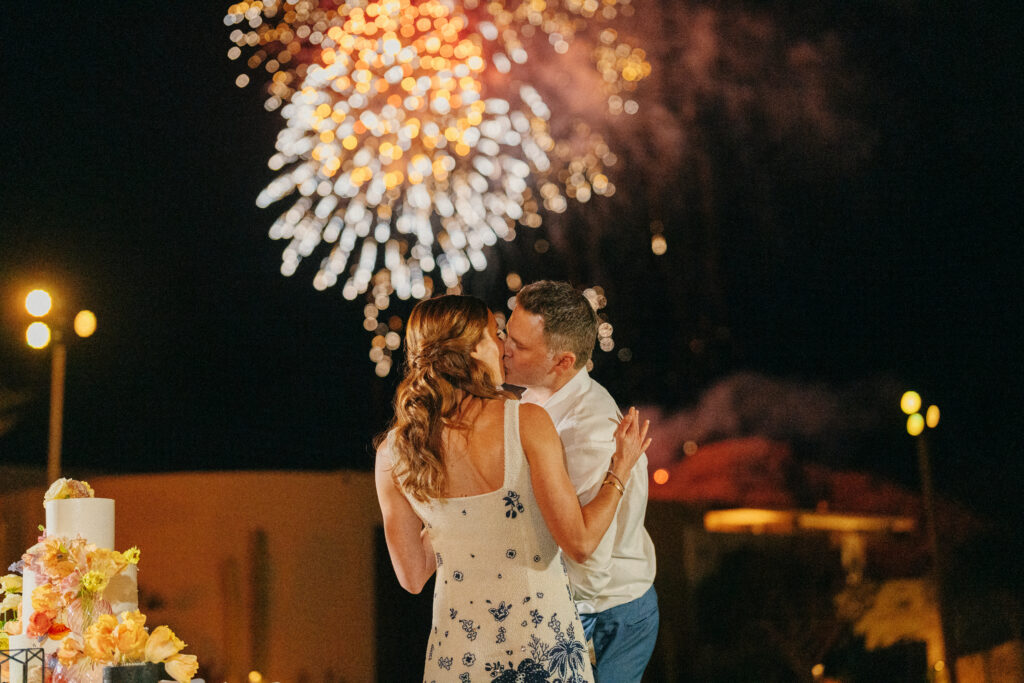
Open Dance Floor
Once all the formal dances and ceremonies are out of the way, it’s time to get everyone on the dance floor. Your DJ or band can transition to crowd-pleasers, encouraging everyone from your great-aunt to your college friends to join in.
Typically, the dance floor opens after the cake is cut and the bride and groom have made their rounds greeting guests. A well-planned music flow ensures the energy keeps building throughout the night.
The Last Wedding Dance
The last dance of the evening is often overlooked, but it’s a perfect way to close out the celebration. Whether you choose a slow, intimate song or a high-energy hit, the last dance is your final chance to capture the spirit of the night. Some couples even opt for a private last wedding dance while guests prepare for the send-off, creating an intimate moment to reflect on the day.
Alternatively, keep everyone on the dance floor for one final song before the grand exit. A great wedding often ends with guests who don’t want to leave the dance floor — and that’s a sure sign of a successful party!
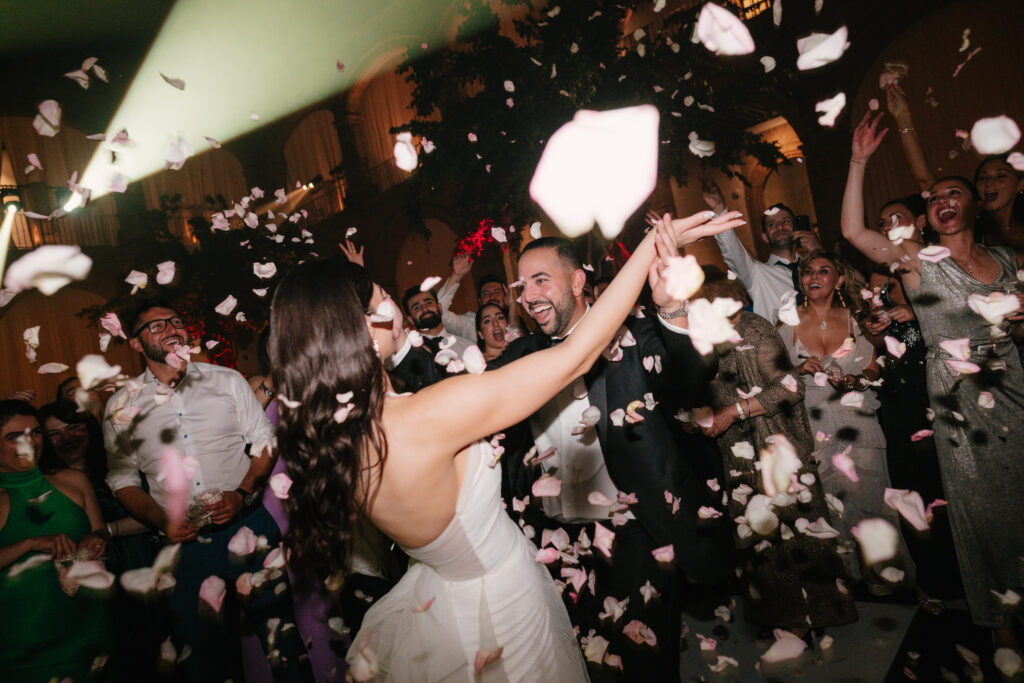
Special Dances: An Anniversary or Generational Wedding Dance
Some couples choose to honor long-married couples or family members with anniversary or generational wedding dances. This often happens midway through the reception, providing a sentimental break in the festivities. It can also act as a smooth transition into open dancing as guests join in once the honored couples step aside.
Final Thoughts on Wedding Dances
Planning the timing of your wedding dances ensures the evening flows effortlessly from one magical moment to the next. With a little forethought, you’ll have everyone on their feet, ready to celebrate alongside you. Just remember, this is your day, so plan it in a way that feels right for you.
Salud!

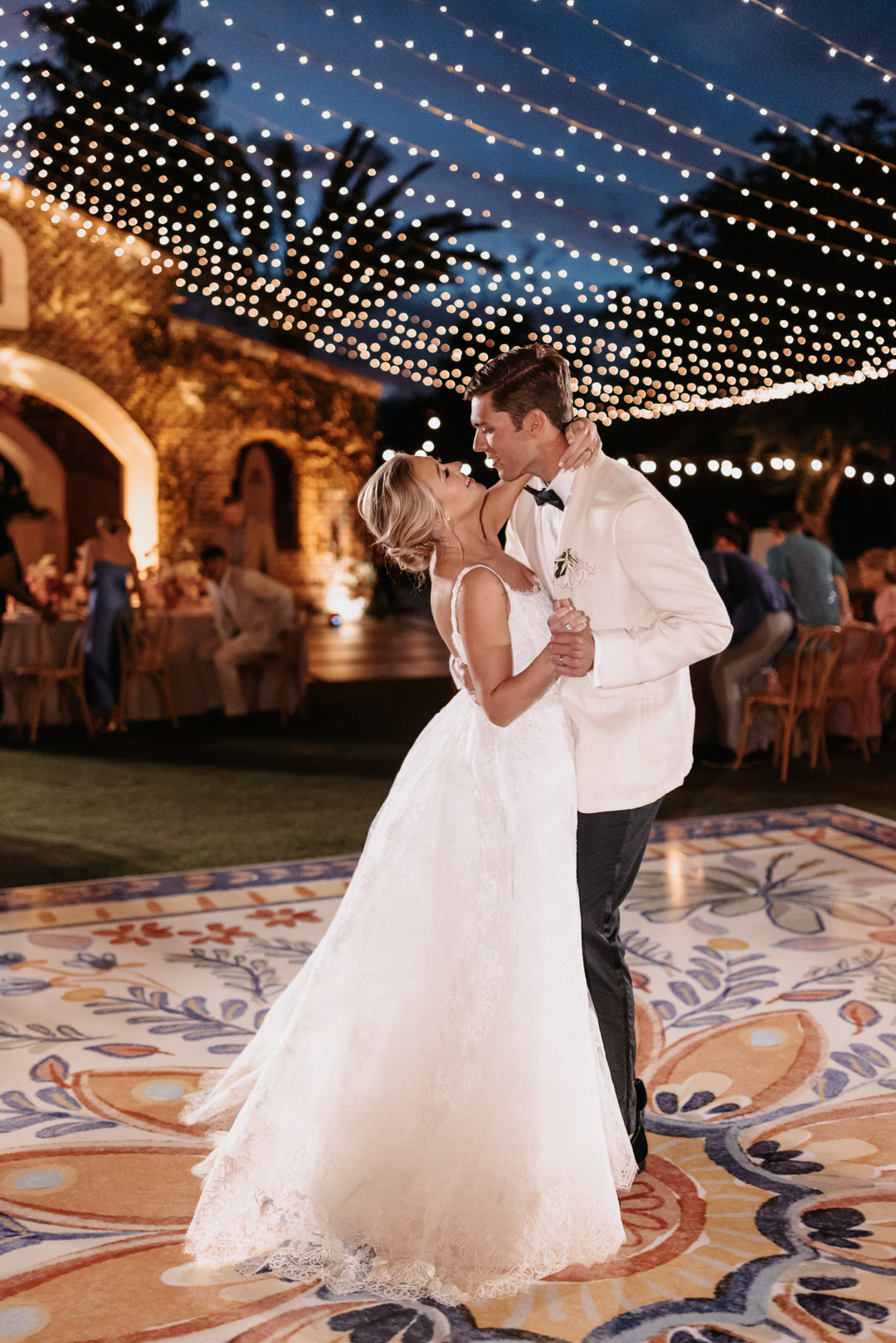
Pinterest
/
Share on
facebook